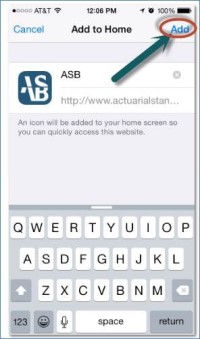The Nov. 11 professionalism webinar, “Self-Regulation and the Actuarial Profession,” engaged the audience in an enlightening discussion about how every actuary has a role to play in self-regulation by adhering to the Code of Professional Conduct, the U.S. Qualification Standards (USQS), and actuarial standards of practice (ASOPs). As there were more questions than the presenters could answer during the webinar, some of the additional ones are answered here.
When you are talking about “practice area” in the USQS, do you mean casualty, life, health, and pensions, or narrower topics like “workers’ compensation reserving”?
Both the 2008 and 2022 USQS state that “areas of practice are Casualty, Health, Life, and Pension.”
Is a webinar an organized event for the purpose of continuing education (CE)?
Participating in live webinars that include the participation of actuaries from different organizations is considered an organized activity under the USQS, as you can interact with the presenters and actuaries from other organizations through the webinar platform by, for example, asking questions. Recorded webinars would be considered an “other” activity, as they do not allow you to interact with other actuaries or professionals in real time.
Does law supersede the professionalism requirements embodied in the Code? What should I do if there is a conflict?
The Code defines Law as “statutes, regulations, judicial decisions, and other statements having legally binding authority” and states, “Where requirements of Law conflict with the Code, the requirements of Law shall take precedence.” ASOPs, too, give precedence to Law. ASOP No. 1, Introductory Actuarial Standard of Practice, states, “Where requirements of law conflict with the guidance of an ASOP, the requirements of law shall govern.” If you deviate from the guidance given in an ASOP to comply with Law, you should disclose that in your actuarial report.
I thought I heard that Precept 2 applies to statements of actuarial opinion (SAOs) in the U.S. I don’t see anything in the Code about the U.S. Could you please clarify?
Precept 2, Annotation 2-1, states, “It is the professional responsibility of an Actuary to observe applicable qualification standards that have been promulgated by a Recognized Actuarial Organization for the jurisdictions in which the Actuary renders Actuarial Services and to keep current regarding changes in these standards.”
If you are rendering actuarial services in the United States, the USQS are the applicable qualification standards. If you render actuarial services outside the U.S., you must comply with the qualification requirements in the jurisdiction where the SAOs are being rendered. If that jurisdiction has no qualification standards, you must still comply with Precept 2, which states that an actuary shall perform Actuarial Services only when qualified to do so.
Many actuaries perform actuarial services with input from supporting actuaries. Must the actuary who issues an SAO ensure that all support actuaries have met the USQS? For example, if a support actuary has not quite met the continuing education (CE) requirements for the prior year, must the senior actuary refrain from issuing an SAO that includes input from that support actuary?
There are two sets of issues in this scenario—those concerning the support actuary and those concerning the senior actuary. If the support actuary is credentialed, they are subject to the Code and, through Precept 2, to the USQS. So, if the “input” provided by the supporting actuary includes “an opinion expressed by an actuary in the course of performing Actuarial Services and intended by that actuary to be relied upon by the person or organization to which the opinion is addressed,”1 the supporting actuary must meet the USQS requirements before providing the senior actuary that “input.” An actuary who has not completed CE requirements for the current year is not qualified to issue an SAO.
Although the Code does not explicitly require senior actuaries to ensure that their support actuaries meet the USQS, Precept 13 requires all actuaries with knowledge of an apparent material violation of the Code to either resolve the apparent violation through discussion with the other actuary or disclose such violation to the ABCD. So, it is a good idea for senior actuaries to ensure that staff actuaries meet the USQS requirements, including CE.
How can I get the Code of Professional Conduct booklet from the Academy?
Academy members may request a pocket size printed copy of the Code via the Academy website.
Footnotes
1. Definition of SAO in 2008 USQS. The 2022 USQS define an SAO as “an opinion expressed by an actuary who is subject to the Code of Professional Conduct by virtue of membership in a U.S.-based actuarial organization, where such opinion is expressed in the course of performing Actuarial Services and intended by that actuary to be relied up on by the person or organization to which the opinion is addressed.”




